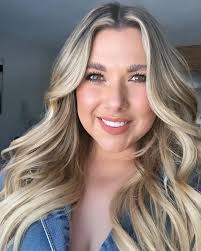Taking Care of Your Hair Extensions: What Actually Works
So you got extensions and you love them. The volume, the length, the way you feel when you look in the mirror. Now you're probably wondering: how do I keep them looking this good?
I get asked this question constantly. Clients leave the salon looking amazing, and then a few weeks later they're texting me worried because their extensions feel dry or they're getting tangles.
Here's the truth: extensions need a little more care than your natural hair. But it's not complicated. You just need a simple, consistent routine. Let me walk you through what actually works based on what I've seen over years of doing this.
Why Extensions Need Different Care
Your natural hair gets oils from your scalp constantly. That's what keeps it moisturized. Extensions don't have that. They're just sitting there, not getting any natural hydration. That means they dry out faster and you have to provide moisture yourself.
Whether you have tape-ins, hand-tied wefts, or keratin bonds, the basic principle is the same: gentle, consistent care keeps both the extensions and your natural hair healthy. Good care can make extensions last way longer. Neglecting them leads to tangling, matting, and damage to your natural hair. Nobody wants that.
Your Daily Routine: Morning and Night
This stuff takes maybe five minutes total but makes a huge difference.
Morning
Brush your hair before you do anything else. Start at the ends and work up to the roots. Hold the base of the extensions while you brush so you're not pulling on the attachment points. You need a brush designed for extensions with soft bristles or loops. Regular brushes will snag and break the hair.
If your extensions feel dry, use a tiny bit of lightweight oil or serum on the mid-lengths and ends. Not at the roots. Not near the bonds. Oil can make tape-ins and k-tips slip. Just the ends.
If you're using heat tools, always use a heat protectant first. Always.
Night
Brush your hair again before bed. Thoroughly.
Put it in a loose, low braid or ponytail. This keeps the hair from rubbing against your pillow and creating tangles while you sleep.
If you can, get a silk or satin pillowcase. The smooth surface reduces friction and helps the hair retain moisture. It makes a real difference.
And this is critical: never go to sleep with wet or damp extensions. Ever. That's the fastest way to create severe matting at the roots, and it's a nightmare to fix. I've had clients call me crying because they went to bed with wet hair and woke up with a matted mess. Don't do it.
Wash Day: Once or Twice a Week
You don't want to wash extensions too often. Once to three times a week is usually perfect. But when you do wash them, you need to do it right.
Before You Get in the Shower
Brush your hair completely before it gets wet. This is so important. If you skip this step and your hair has any tangles, they're going to get way worse in the shower.
In the Shower
Use sulfate-free shampoo and conditioner. Sulfates are harsh and they strip moisture from extensions. They can also weaken the bonds over time.
Tilt your head back and let the water run down your hair. Massage the shampoo into your scalp gently with your fingertips. Don't scrub in circles or pile all your hair on top of your head. That causes tangles at the root. Let the shampoo flow down through the lengths of the hair. That's enough to clean the extensions.
Apply conditioner only from mid-lengths to ends. Keep it away from the bonds, the tape, the wefts, all of it. Conditioner near the attachments can make them loosen or slip. Let it sit for a few minutes, then rinse thoroughly.
After the Shower
Gently squeeze out excess water. Pat your hair with a microfiber towel. Don't rub.
If you're blow-drying, start by getting your roots and the attachment points completely dry first. Use low heat. Once those are 100% dry, then move to the ends. This protects the bonds and prevents problems.
My client Rachel made the mistake of letting her extensions air dry for the first few weeks. She thought she was being gentle. But the bonds weren't drying properly and she started getting matting. Once we fixed her drying routine, the problem went away completely.
Weekly Deep Conditioning
Once a week or every other week, use a deep conditioning mask. Apply it from mid-lengths to ends and leave it on for 15 to 20 minutes.
Look for masks that say "hydrating" or "moisturizing." Avoid anything that says "strengthening," "repairing," or "keratin." Too much protein can make extensions brittle and prone to breakage.
Adjusting for Your Hair Type
Your natural hair affects how you should care for your extensions.
If you have fine hair: Use lightweight products. Heavy serums will weigh your hair down. Be extra gentle when brushing to avoid putting too much tension on your natural roots.
If you have an oily scalp: You might need to wash more often. Focus the shampoo on your scalp. You can use dry shampoo between washes, just spray it away from the bonds.
If you have blonde extensions: Be careful with sunscreen. Some ingredients (like Avobenzone and Octocrylene) can turn blonde extensions pink or peachy. Use mineral-based sunscreen and tie your hair up when you're applying it.
I learned this one the hard way. A client came back with pink tips after a beach vacation. We figured out it was her sunscreen. Now I warn all my blonde extension clients about this.
Professional Maintenance Matters
Your at-home routine is important, but it works together with professional care. You need to come back to the salon regularly, usually every 4 to 8 weeks depending on your method.
During these appointments, I check every bond or weft, remove any naturally shed hairs that have built up, and move the extensions up to account for your new growth.
Think of your stylist as your partner in this. We can spot potential problems before they become real issues. Regular maintenance keeps everything looking flawless and prevents damage to your natural hair.
I had a client, Emily, who decided she could skip a few maintenance appointments to save money. By the time she came back, we had matting, some of the bonds had slipped way down, and her natural hair was stressed. It took two extra appointments to fix everything. Regular maintenance would have been easier and cheaper.
Your Questions About Extension Care
Can I swim with extensions?
Yes, but you have to be careful. Wet your hair with clean water and put on some leave-in conditioner before you get in. Braid your hair. As soon as you're done swimming, rinse your hair thoroughly to get out the chlorine or salt, then wash and condition it properly.
My extensions feel really dry. What should I do?
They need more moisture. Use a weekly deep conditioning mask and put a lightweight oil on the ends every day. Make sure you're using sulfate-free shampoo that isn't stripping the hair.
What do I do if my extensions get tangled?
Be patient. Lightly dampen the tangled area with water and use a detangling spray or a little oil. Use your fingers first to gently separate the knots. Then use a wide-tooth comb, starting from the very bottom and working up slowly. Never pull or rip through tangles. If you have severe matting, call your stylist immediately.
It's Really About Consistency
Taking care of extensions isn't hard, but you have to be consistent. A few minutes every morning and night, plus proper wash days once or twice a week. That's it.
The clients who love their extensions months down the road? They're the ones who follow this routine. The clients who have problems? Usually, they're skipping steps or doing things that damage the hair without realizing it.
Your extensions are an investment. In your appearance, yes, but also in your confidence and how you feel about yourself. Taking care of them is just taking care of that investment.
If you ever have questions or you're not sure if you're doing something right, ask your stylist. That's what we're here for. We want your extensions to look amazing for as long as possible, and we want your natural hair to stay healthy underneath.
That's the whole point.

Tiffany Loe
Owner & Master Stylist
Hair extension expert and salon owner with a passion for helping stylists succeed. Tiffany has been transforming hair and building confidence for over 15 years.




